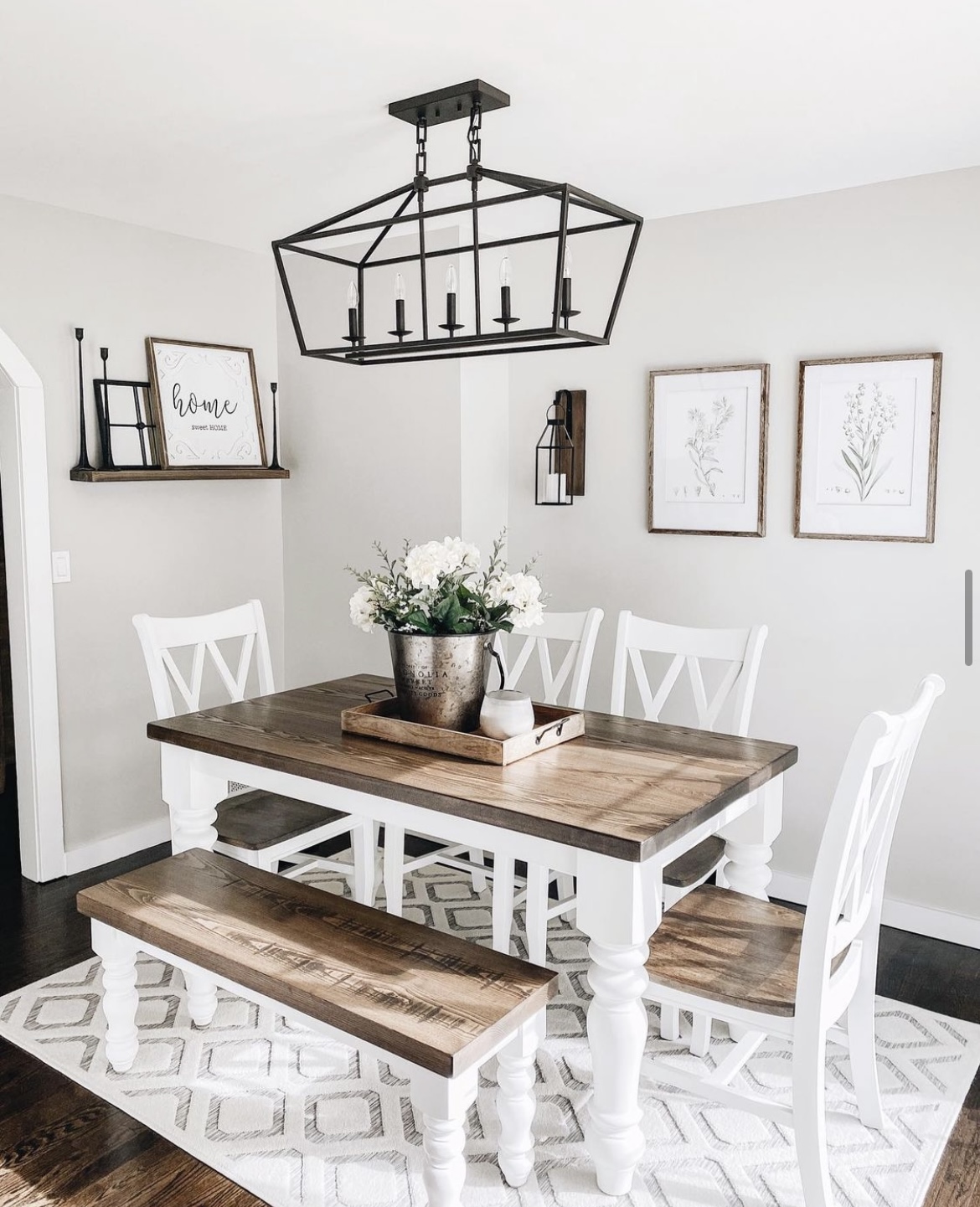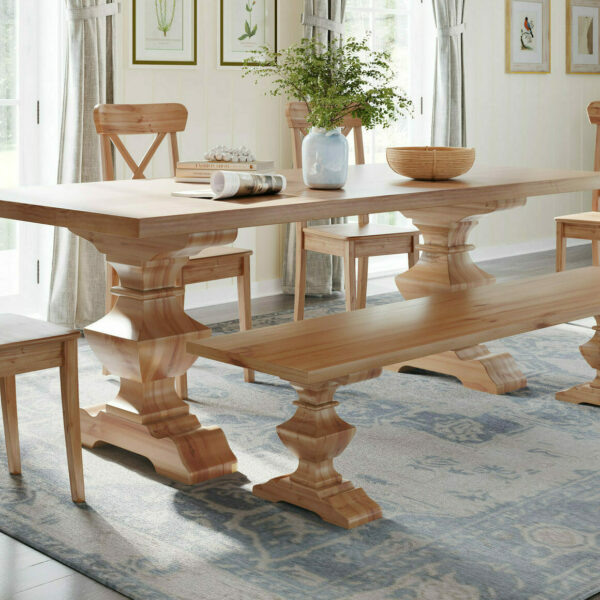Affordable and High-Quality Dining Room Table Legs for Every Budget
Affordable and High-Quality Dining Room Table Legs for Every Budget
Blog Article
From Traditional to Modern: Locate the Perfect Dining-room Table Legs for Your Design
While timeless designs such as cabriole and transformed legs evoke a feeling of classic class, contemporary designs like hairpin and geometric choices present a chance for striking aesthetic rate of interest. As you consider these elements, the question remains: just how can you perfectly incorporate these varied leg styles to develop a harmonious dining experience?
Understanding Table Leg Styles
The variety of eating space table leg designs can considerably affect both the looks and functionality of the area. Each leg style contributes unique functional attributes and visual components, catering to diverse style choices and use demands. Comprehending these styles is important for selecting the right dining table that lines up with your overall interior layout vision.
As an example, tapered legs provide a clean, timeless appearance that can enhance a room's style, while pedestal bases provide security and optimize legroom, making them optimal for smaller sized rooms. Barrette legs, a hallmark of mid-century modern design, introduce a commercial style, enabling an airy, open feeling. Similarly, trestle legs stimulate rustic beauty, supplying durable support and a sense of timelessness.
In addition, the choice of products plays a substantial duty. Wood legs can bring warmth and structure, whereas steel choices typically communicate a sleek, modern vibe. Eventually, comprehending table leg styles is important for creating a natural dining area that reflects individual design while making sure functionality and comfort. By thoughtfully thinking about these aspects, you can enhance both the useful and aesthetic allure of your dining room.
Standard Table Leg Options
When choosing dining-room table legs, conventional options typically embody timeless beauty and craftsmanship. These styles mirror an abundant heritage and a commitment to top quality, making them ideal for those that value classic looks.
Among the most iconic standard leg designs is the cabriole leg, characterized by its elegant rounded form. This layout typically includes ornamental makings and is most generally discovered in Queen Anne and Chippendale furniture. An additional popular option is the transformed leg, which flaunts a series of smooth, rounded shapes that provide a timeless appearance while keeping stability.
Furthermore, the straight leg, while basic, offers a basic and durable structure that can mix flawlessly with a range of tabletop styles. For those attracted to ornate outlining, claw-and-ball feet legs stimulate a feeling of magnificence and can work as a stunning centerpiece in any dining area.
Finally, stand bases, although not strictly legs, supply an alternate traditional option that permits enough legroom and can be magnificently sculpted. Each of these standard leg styles adds to the overall ambiance of a dining-room, weding function with visual charm.

Modern Table Leg Designs
Modern table leg designs offer a diverse series of styles that highlight tidy lines and ingenious materials. These styles frequently prioritize functionality while functioning as striking focal points within an eating space. Minimal aesthetics are common, with legs crafted from materials such as steel, glass, and crafted wood, which add to a contemporary and ventilated feeling.
One preferred design is the hairpin leg, defined by its slender, conical structure that provides security without frustrating the table top (dining room table legs). This design is often found in mid-century modern furniture and can effortlessly complement numerous dining table forms. An additional pattern is the usage of geometric shapes, where legs advice may handle angular or unbalanced forms, adding aesthetic interest and a touch of creativity

Blending Styles for Distinct Areas
Frequently, property owners look for to produce distinct dining rooms that mirror their personal style by blending various design elements. This approach permits the incorporation of diverse visual appeals, resulting in a harmonious yet distinctive atmosphere. Matching a rustic wood table with sleek, modern-day metal legs can develop an eye-catching contrast that boosts the area's total appeal.
Furthermore, integrating vintage table legs with contemporary tabletops can stimulate a feeling of background while keeping a modern-day sensibility. Such mixes not just display private taste yet likewise motivate imagination, permitting homeowners to curate a room that feels both personal and inviting.
Shade plays a crucial function in this mixing process; selecting table legs that complement or comparison with the existing color design can boost aesthetic interest. Whitewashed legs can soften the boldness of a dark table surface, developing a balanced visual.
Tips for Selecting the Right Legs
Choosing the right table legs is vital for achieving both performance and aesthetic allure in your eating room. Begin by thinking about the general design of your area. Traditional settings gain from legs that feature detailed makings or transformed designs, while contemporary rooms might ask for sleek, minimal designs.
Following, examine the elevation and security of the legs. dining room table legs. Basic table vary between 28 to 30 inches in height, so make sure the legs match this dimension for comfort. Furthermore, robust materials, such as wood or steel, can boost stability and get more long life
Assess the leg form as well-- choices include directly, tapered, or pedestal styles. Straight legs use a classic appearance, while tapered legs can add a touch of sophistication. Pedestal bases give enough legroom and are perfect for smaller sized rooms.
Final Thought
In summary, selecting the excellent dining room table legs requires cautious factor to consider of both modern-day and standard designs. By balancing leg style, height, and material with the total decor, a natural and welcoming environment can be attained.
The variety of eating room table leg styles can considerably affect both the appearances and functionality of the area. Eventually, understanding table leg styles is vital for developing a natural eating location that reflects personal style while guaranteeing functionality and comfort.One of the most iconic traditional leg styles is the cabriole leg, characterized by its stylish rounded form. Straight legs supply a classic appearance, while conical legs can add a touch of elegance.In recap, picking the perfect eating space table legs needs mindful consideration of both contemporary and traditional styles.
Report this page